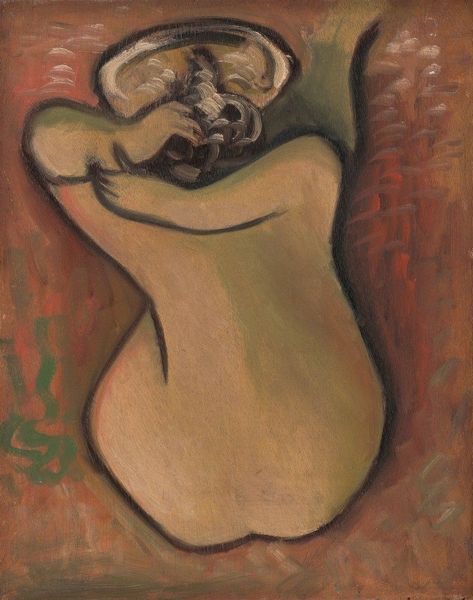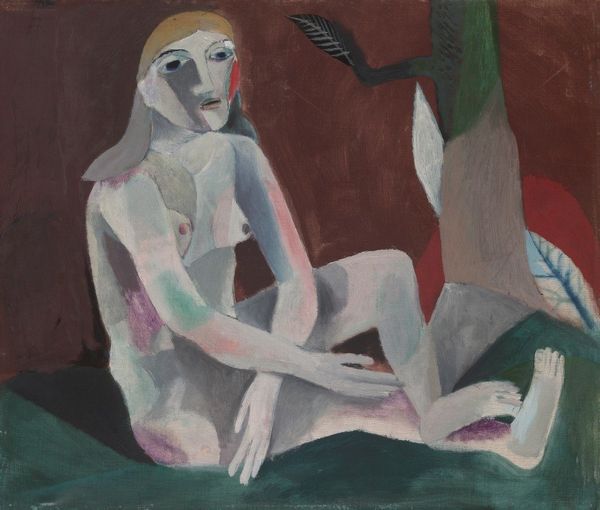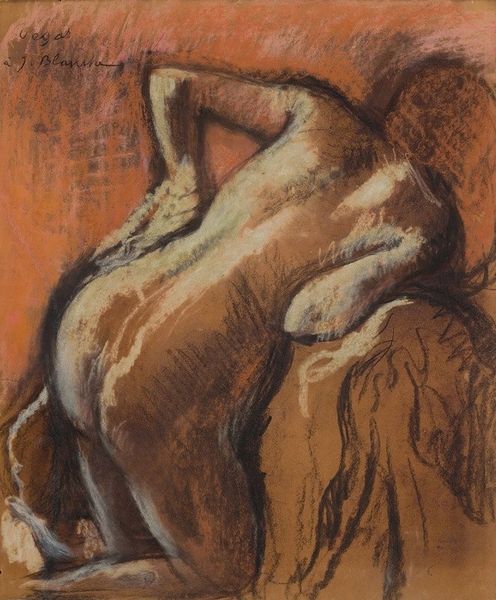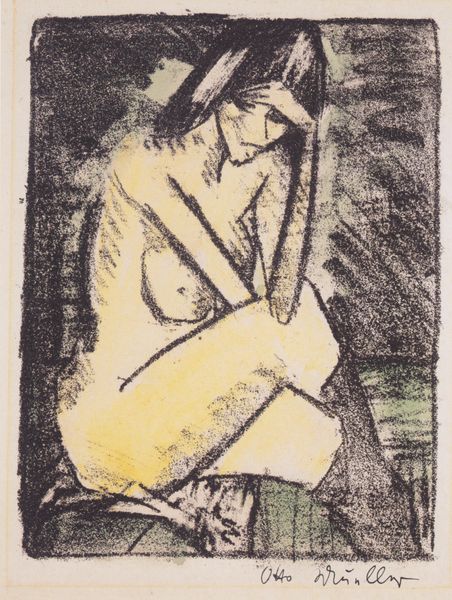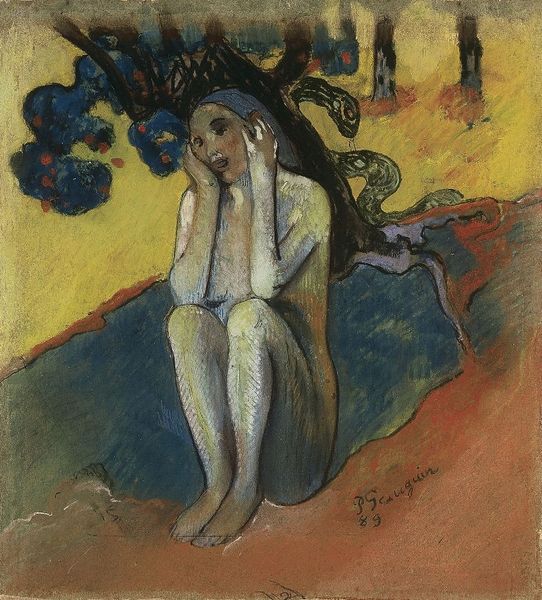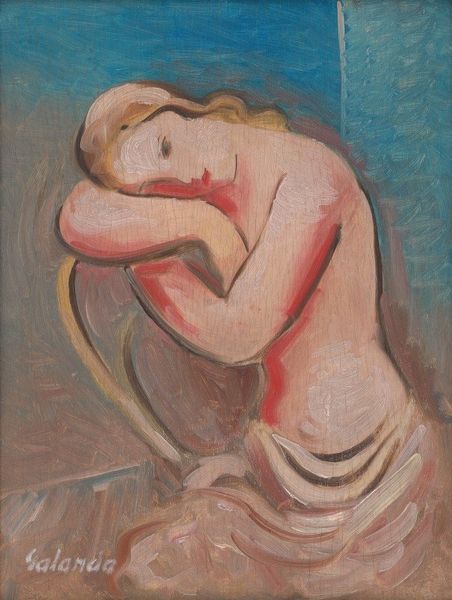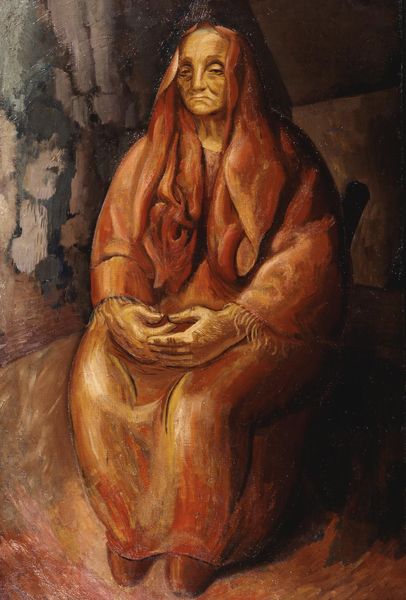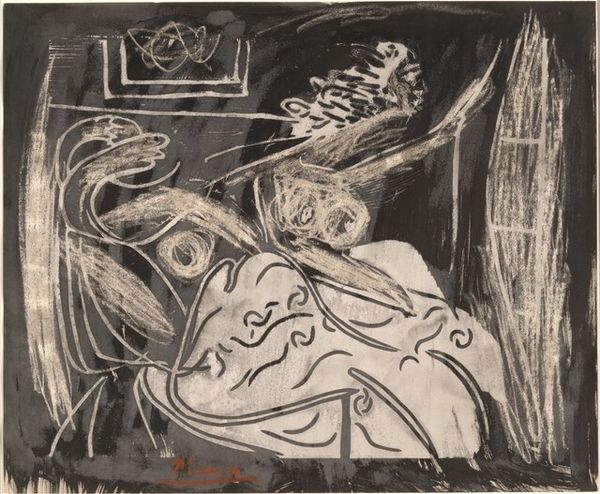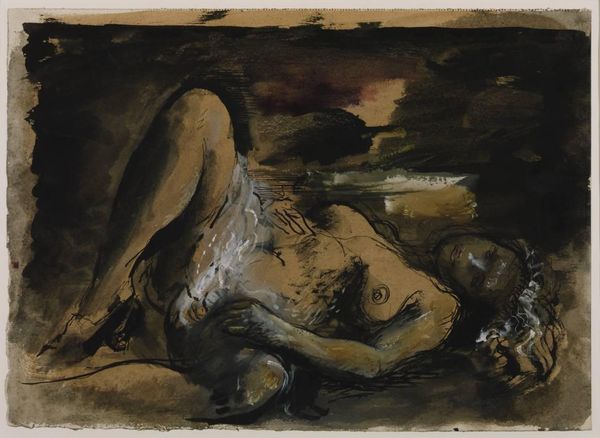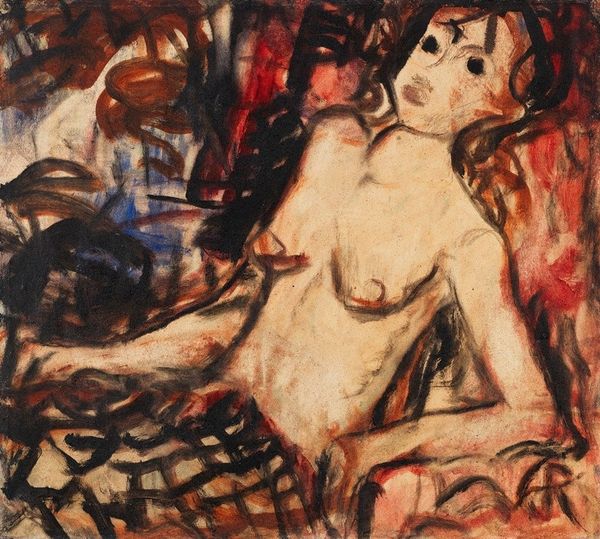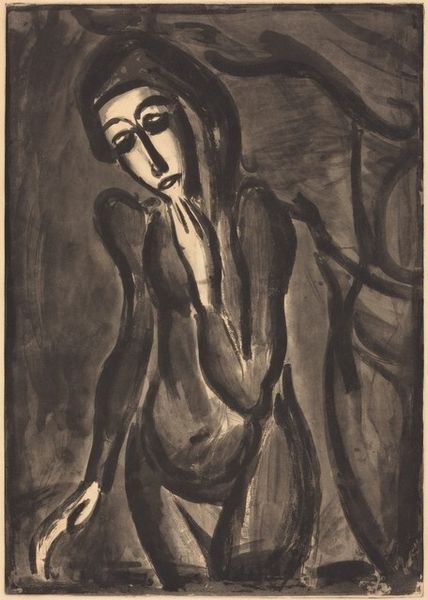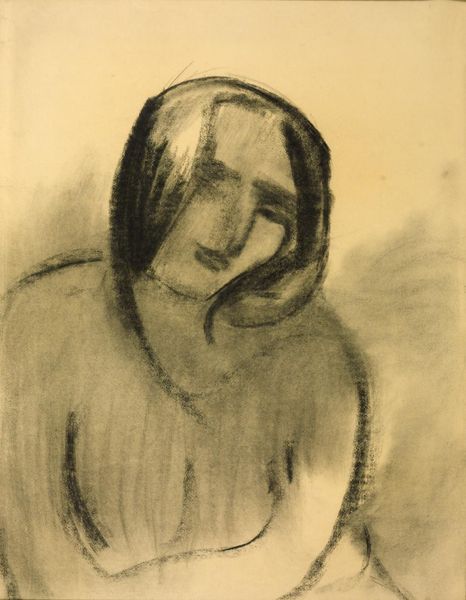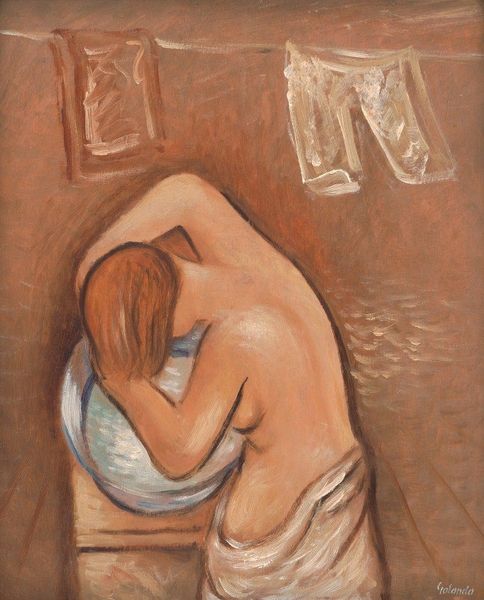
Dimensions: 63.4 x 50.6 cm
Copyright: Joy Hester,Fair Use
Editor: Here we have "Dos ni\u00f1as en la calle," or "Two Girls in the Street" by Joy Hester, painted in 1957 with acrylic paint. It feels…confrontational. The perspective is unusual, almost voyeuristic, and the girls seem isolated despite being together. What do you see in this piece? Curator: This work, for me, speaks volumes about the social constraints placed on women and girls in the mid-20th century. Consider the title itself, "Two Girls in the Street" - the street as a space of both freedom and potential danger, particularly for women. Do you see how Hester obscures their faces? Editor: Yes, the girl in front only has a ribbon visible, and the girl in the back only has shadowy features, as if she’s trying to disappear. Curator: Exactly! That’s part of what I find so powerful. The lack of distinct facial features removes their individuality, making them symbols of collective female experience. What kind of experience do you imagine they represent? The style pushes to the expressionistic. Editor: Maybe a commentary on the limited roles available to women then, the pressure to conform, or even the ever-present threat of male gaze and societal judgment. Curator: Precisely. The brown and muted color palette emphasizes a sense of constraint. The awkward positioning reinforces a feeling of unease, a visual manifestation of the discomfort women often experience in public spaces. But there is also an undeniable strength in their presence, a quiet act of resistance in simply occupying space. Think about what it meant for Hester, as a woman artist, to create this kind of imagery during that time. Editor: It’s a potent reminder that art can be a powerful tool for social commentary. I see the girls' existence as almost like a quiet form of activism in and of itself, now. Curator: It is an invitation to critically examine societal structures and their impact on individual lives. I learned from your reading of the painting as being voyeuristic and somewhat confronting in its positioning of figures. Editor: I appreciate you elaborating on its potential message. I didn't see the nuance and the way it contextualizes the restrictions faced by women during that period!
Comments
No comments
Be the first to comment and join the conversation on the ultimate creative platform.
